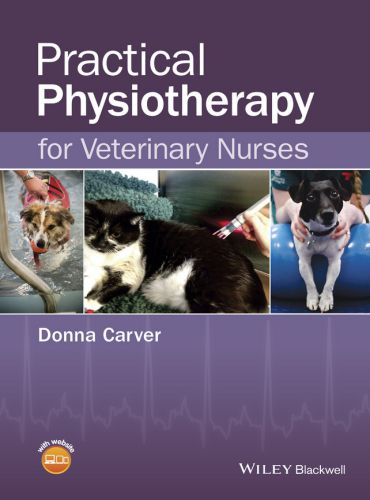Practical Physiotherapy for Veterinary Nurses 1st Edition
by

Reflecting a rapidly growing area of interest in veterinary practice, this practical, pocket-sized guide to small animal physiotherapy has been designed for quick reference, providing the ideal guide for busy practice veterinary nurses when they really need it.
- Reflects the need for a text in this rapidly growing area of interest, providing the first on this topic for veterinary nurses
- Designed in a pocket-sized format so that VNs can carry it around for quick reference
- The author has ideal experience for this field, having worked as both a veterinary nurse and an animal physiotherapist
- This book is accompanied by a companion website which contains videos and self-test questions and answers
The Practical Physiotherapy for Veterinary Nurses textbook is ideal for veterinary nurses working in small animal practice with an interest in physiotherapy for both medical and surgical patients.
This book has several good points. Recommended rehabilitation is broken down into early phase (0 to 2 weeks), midphase (2 to 6 weeks), and late phase (6 to 12 weeks). It contains a nice review of respiratory therapy from a physical standpoint, a subject rarely tackled in other textbooks. Readers are reminded throughout the book to assess both subjective and objective outcome measures to evaluate the response and progression of therapy in individual patients. Communication and follow-up with the veterinary surgeon is also stressed.
Gait analysis or assessment is a skill that requires close observation of the patient at walk and trot, to determine the cause and location of the lameness. A start point is to become familiar with a normal gait pattern, taking into account breed variations (i.e. dachshund vs bull mastiff). Once you are familiar with normal gait pattern, any deviation from this can be recognised.
Animals should be on a loose lead at walk and trot to observe for anatomical symmetry (normal gait pattern). Animals should be observed in a straight line towards, and then a straight line away from the observer. Pay particular attention to how the animal turns to both the left and right side – this may show reluctance to transfer weight onto the affected limb, or that the animal has issues with balance. The observer should then view the animal moving from both left and right sides. Subtle lameness may not readily be observed at walking pace; however, at trot the animal will only have one thoracic limb and one pelvic limb in contact with the ground, and these limbs will be placed under greater pressure meaning a lameness may be easier to detect. Videoing the gait pattern, then slowing it down on playback, may be a useful way to detect lameness.
This Book is Available For Premium Members Only (Register Here)
Unlock 3000+ Veterinary eBooks or Go To Free Download
